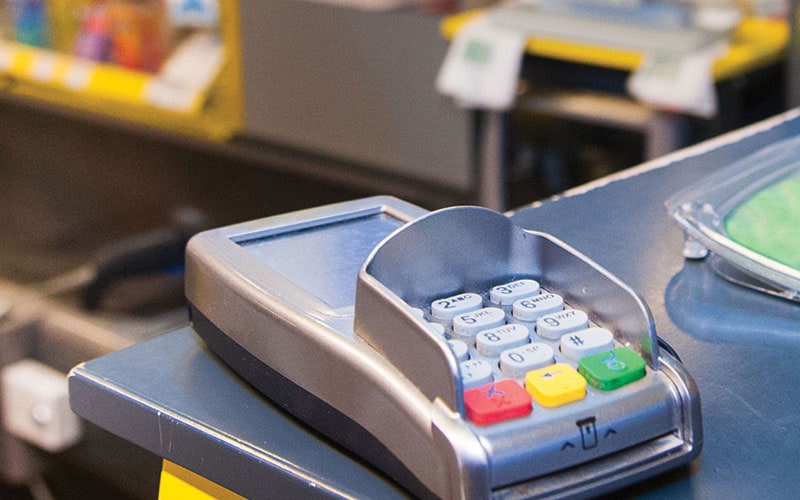Cash Discounting 101: What It Is and How It Can Benefit Your Business
Even though credit cards are the most common payment method today, studies show that cash use will not disappear anytime soon.

Cash transactions remain popular for various reasons, including convenience, budgeting, and privacy.
However, processing credit card payments can be costly for businesses due to credit card processing fees. This is where cash discounting comes in.
Key Takeaways
- Cash discounting reduces processing fees for businesses.
- It promotes transparency and fairness in pricing.
- Businesses need to comply with regulations.
- Educating customers about the program is crucial.
- Implementing the program requires staff training and system updates.
What is the Cash Discounting Strategy?
Cash discounting is a pricing strategy in which merchants post credit card prices and offer discounts for customers who pay with cash.
This strategy is permitted under the Durbin Amendment to the Dodd-Frank Wall Street Reform and Consumer Protection Act, which allows merchants to offer discounts to customers as an incentive for using payment methods that are less expensive for the merchant, such as cash.
This strategy differs from surcharging when merchants add a fee to credit card transactions.
Businesses can reduce their payment processing costs by implementing a cash discounting strategy. They typically pay lower fees for cash transactions than for credit card transactions.
However, businesses must comply with all legal requirements and regulations related to cash discounting, as failure to do so can result in penalties and fines.
Benefits of Cash Discounting
Boosting Profitability
Cash discounting enables businesses to maintain their prices for cash transactions while passing on the cost of credit card processing fees to customers who choose to pay with cards.
This approach can be particularly beneficial for businesses with high card transaction volumes, as it allows them to recoup the cost of processing fees without increasing prices for all customers.
Transparency & Fairness
Cash discounting promotes transparency and fairness in pricing by clearly delineating the cost difference between cash and card transactions.
Customers can easily see the added cost of using a card, which enhances transparency in pricing.
This approach is considered fair, as customers who opt for the convenience of card payments cover the associated fees, while those who choose to pay with cash are not burdened with these additional costs.
This transparency can help build customer trust and enhance the overall customer experience.
Streamlining Operations
Cash discounting can streamline operations by simplifying accounting and financial management processes.
By separating cash and card transactions, businesses can more easily track revenue streams and reconcile payments.
This separation can also help businesses identify trends in payment preferences and adjust their strategies accordingly.
Streamlining operations in this way can lead to greater efficiency and cost savings, allowing businesses to focus on other areas of their operations.
Encouraging Cash Flow
Cash discounting can improve cash flow by incentivizing cash payments. Cash transactions are typically settled instantly, providing businesses with immediate access to funds.
This immediate access can help improve cash flow and reduce reliance on external financing options.
By encouraging cash payments, businesses can reduce their exposure to potential chargebacks and fraud associated with card transactions, further improving their financial stability.
Driving Customer Engagement
Offering discounts for cash payments can drive customer engagement and loyalty. Customers are often attracted to discounts and may be more likely to choose cash payments to take advantage of these savings.
By incentivizing cash payments, businesses can build stronger customer relationships and encourage repeat business.
This can lead to increased customer loyalty and positive word-of-mouth referrals, ultimately benefiting the business long-term.
How Does a Cash Discount Program Work?
Here’s a step-by-step explanation of how the cash discount program works:
- Price Display: The merchant displays two prices for each item or service: cash prices and credit prices. The cash price is lower than the credit card price, reflecting the discount offered for cash transactions.
- Transaction Process: When a customer purchases and chooses to pay with cash, the transaction is processed as usual.
- Discount Application: After completing the transaction, the discount amount (a percentage of the total purchase price) is subtracted from the total amount due. The discounted amount is what the customer pays.
- Receipt: The customer receives a receipt that clearly shows the original price, the discount amount, and the final discounted price they paid.
- Credit Card Transactions: Customers who pay with a credit card have their transaction processed at the higher credit card price, and no discount is applied. The merchant covers the cost of credit card processing fees for these transactions.
- Compliance and Regulation: It’s important for merchants offering cash discount programs to comply with card network rules and regulations. For example, they must ensure the cash discount is clearly disclosed to customers and applied consistently to all transactions.
The Difference Between Surcharges and Cash Discounting

Cash discounting and credit card surcharging are two strategies businesses use to offset the cost of credit card processing fees.
While both involve adjusting prices based on the payment method, there are key differences between the two approaches.
Cash discounting involves offering a discount to customers who pay with cash. This discount is deducted from the list price at checkout, making it a perceived incentive for customers to choose cash payment.
Cash discounting is legal in all US states as long as the program complies with federal regulations. It is less regulated by card networks, making it easier for merchants to manage and stay compliant.
On the other hand, credit card surcharging involves adding a fee to the list price for customers who pay with a credit card. This fee is perceived as a penalty for using a credit card instead of cash.
Unlike cash discounting, surcharging is limited and not allowed in some US states. It comes with more regulations from card networks, requiring merchants to display the surcharge fee as a separate line item on sales receipts.
Another key difference is how debit cards are treated. With cash discounting, debit cards are treated the same as credit cards, making them eligible for the discount.
However, with the surcharge program, debit cards cannot be subjected to the surcharge, ensuring that customers using debit cards do not incur additional fees.
Potential Challenges of Cash Discounting
While cash discounting can offer several benefits to businesses, there are also potential challenges that need to be considered:
- Customer Perception: Some customers may perceive cash discounting as a way to penalize them for using credit cards, which could lead to negative feelings or resistance to the pricing structure.
- Compliance: Ensuring compliance with regulations and card network rules regarding cash discounting is crucial. Failure to comply could result in penalties or legal issues.
- Implementation Costs: Implementing a cash discount program may require upfront costs for signage, POS system updates, and staff training, which could impact the initial budget.
- Customer Education: Educating customers about the cash discount program and how it works may require additional effort and resources to ensure understanding and acceptance.
- Competitive Disadvantage: If competitors do not offer cash discounting, businesses that do may be at a disadvantage in terms of perceived value or pricing competitiveness.
- Payment Processing: While cash transactions are not subject to processing fees, businesses still need systems to handle cash securely and efficiently.
- Impact on Sales: There is a risk that some customers may choose not to purchase if they are not willing to pay the higher price for using a credit card, potentially leading to a loss of sales.
- Record Keeping: Maintaining accurate records of cash transactions and discounts provided can be challenging and requires careful attention to detail.
What Businesses Should Use a Cash Discount Program
- Sales Volume: Businesses considering a cash discount program should analyze their sales volume to ensure that the program’s benefits outweigh the costs, including any service fee. Businesses with higher sales volumes are more likely to see significant savings from reduced processing fees, making the program more financially viable.
- Low-Ticket Items: Businesses that sell low-ticket items or services, such as convenience stores, fast food restaurants, gas stations, or small retailers, can benefit from a cash discount program. The impact of offering a discount on these lower-priced items is typically more manageable and attractive to cash-paying customers.
- Cash Payment Frequency: If a significant portion of a business’s customers pay in cash, implementing a cash discount program can help reduce the overall cost of processing fees associated with card transactions. Encouraging more customers to pay with cash can increase savings over time.
- Necessity of Product/Service: Businesses that offer products or services that customers consider necessary may find success with a cash discount program. Customers who perceive the product or service as essential to their needs are more likely to accept and appreciate the discount.
- Competitive Landscape: In competitive markets where other businesses offer cash discounting, it may be beneficial to implement a similar program to remain competitive. Customers may be more inclined to choose a business that offers cash discounts over one that does not.
- Strong Cash Tracking Policy: Implementing a cash discount program requires a firm cash tracking policy to ensure that discounts are accurately applied and recorded. This includes training staff to apply discounts correctly, maintaining accurate records of cash transactions, and conducting regular audits to prevent errors or discrepancies.
Discover additional strategies in our guide on how to save on credit card fees.
Best Practices for Implementing Cash Discounting
Understand the Regulations
Before implementing a cash discount program, ensure you understand the regulations and laws in your jurisdiction regarding cash discounts and surcharging. Compliance with these regulations is critical to avoid legal issues.
Transparent Pricing
Communicate the cash discount program to customers by displaying two prices for each item or service: one for cash payments and another for credit card payments. This transparency helps customers understand the pricing structure and encourages cash payments.
Train Staff
Provide training to your staff on how the cash discount program works and how to effectively communicate it to customers. Staff should be able to explain the program clearly and answer customers’ questions.
Update Point-of-Sale (POS) Systems
Ensure your POS systems are updated to accommodate the cash discount program. The system should be able to calculate and apply discounts accurately at checkout. If you’re looking for reliable POS systems to handle this, consider checking out our recommendations for POS systems that make cash discounting implementation a breeze.
Monitor and Audit Transactions
Monitor transactions regularly to ensure discounts are being applied correctly and there are no discrepancies. Conduct audits periodically to verify the accuracy of the program’s implementation.
Educate Customers
Educate customers about the cash discount program’s benefits and how it can help them save money. This can encourage more customers to choose cash payments.
Offer Alternative Payment Options
While the focus is on incentivizing cash payments, it’s important to continue offering other payment options, such as credit cards, debit cards, and electronic payments, to accommodate customer preferences. Accepting credit card payments ensures you can cater to a broader range of customers, maintaining flexibility and convenience.
Evaluate and Adjust
Evaluate the effectiveness of the cash discounting program regularly and be prepared to make adjustments if necessary. Solicit feedback from customers and staff to identify areas for improvement.
Conclusion
Cash discounting offers businesses a strategic approach to managing credit card fees while promoting transparency and fairness in pricing.
By implementing a cash discount program, businesses can reduce processing costs, streamline operations, and improve cash flow.
This pricing strategy can also drive customer engagement and loyalty by offering savings to customers who pay with cash.
Consider implementing a cash discount program today to stay competitive and enhance financial efficiency.































